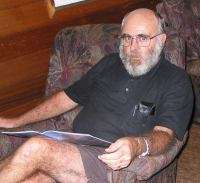
-----
Cyanide copper plating
2004
Q. Copper cyanide barrel plating. We are a company setting up electroplating and we have a number of questions.
1.What is the reason Rochelle salts
⇦ on
eBay
or
Amazon [affil link]
are added? What is affect of this salt?
2.What is evaporation losses per 8 hour day at operating temperatures and conditions of plating bath?
3.Why is carbon filtration required?
4.Is Nitrogen blanketing with suitable lid reduce Oxidation of Cyanide to carbonates?
5.What treatment, if any, is done with cyanide rinsing to remove both copper and cyanide prior to waste disposal.
6.Is distilled water better than demineralised water for preparation of plating bath and make up water additions?
7.What is copper depositing rate with voltage/Amperage settings and metal loadings?
8.What is ideal operating voltage and amperage for one, two and three barrels in one bath?
9.Is there any design available for bath configuration and location of barrels and copper anodes that provides most efficient coating technique and coating rates. We are trying to coat small items 2-3 cc volume each, 1000-2000 per barrel, what is copper anode volume requirements for optimum coating conditions and rates?
10.If no Inert gas blanketing is used, how often is carbonate removal treatment required for normal operation.
11.Is the voltage and Amps increase temperature of bath during plating? If temperature rises how is it controlled.
12.How long will the bath plating solution has to be made up?
13.Does bath liquid require filtration continuously during plating process? If so, what is being removed by such filtration? What type of filters are required,(porosity and make up of filters).
It would be great if you can help us in answering all this questions. Thank you very much If so, what is being remove by such filtration?
Robert Conwayplating shop - Sydney, NSW, Australia
A. Robert,
Sounds to me that you should talk to one of the plating suppliers listed in the Sydney yellow pages and get some first hand professional advice.
The questions you pose would indicate that you know very little about electroplating and the first consideration you must have is the treatment of your waste products and suitable licensing from Sydney Water and the EPA.
Perhaps you might consider using an existing plating company to process your products as there is certain to be someone with capacity already available who has all the knowledge and experience to produce the finish you require.

Bob Lynch
plating company - Sydney, Australia
2004
2004
A. A true shopping list of questions!
1) Rochelle salt is potassium sodium tartrate and is added to a cyanide copper bath as a complexant. It allows for a much lower level of free cyanide to be present in the bath without jeopardising the anodic polarisation. It is also a modest grain refiner.
2) The amount of evaporation will be dependent on the ambient air temperature, the bath temperature, the extraction flow rate and the height of the extraction above the electrolyte level. There are tables available for this from plant manufacturers.
3) Carbon treatment is used to remove any organic contamination that will adversely affect the quality of the electroplating. It should be done with caution as it often results in having to re-add most of your organic additives and re-analyse the bath. It can also be a very dirty job and quite time consuming. There are in-line methods available, but at a price.
4) A nitrogen blanket is not really feasible if you have air extraction. You would need a continuous source of nitrogen gas. However, in theory it should reduce the oxidation of cyanide and it certainly will reduce the amount of carbon dioxide dissolving in the bath.
5) Waste waters must be treated to eliminate all cyanides. You will also probably need to remove any heavy metals. It all depends on your local water authority.
6) Distilled water will be better as it is purer, but it much more expensive. De-ionised water is a good compromise and is the most common solution (sic). Do not use straight mains tap water - you will only cause yourself a lot of trouble.
7) The amount of metal deposited will be dependent on the amount of current passed, the time and to a lesser extent the metal loading of the bath, assuming it is within specification.
8) Typical voltages for barrel plating cyanide copper is about 8-10V. The current will depend on the amount in the barrel, but as a guide, a cathodic current density of 4-6 ASF will be adequate. Multi-barrel loading of a bath will be dependent on the size of the bath and the barrels. Personally I have no knowledge or experience of such a practice.
9) The size of the barrel will be dependent on numerous factors. There is a debate as to whether barrels should be loaded by weight, volume or surface area. It is very much a horses for courses point and should be discussed with the barrel manufacturer. If you are plating plastics, you may need to have an inverted dangler as often such articles float and this too will affect your loading.
10) You will need to analyse the bath every day to determine how fast the carbonate builds up. Once you have determined that, you can adjust your maintenance accordingly.
11) The current and voltage may increase the bath temperature; if it does, look on it as a bonus as you will save on heating costs! You may need to have cooling coils in the tanks.
12)The bath will be useable as soon as it is made up. It depends how fast you can do it and get it checked!
13) Filtration will be needed to remove any unwanted debris that will accumulate in the tank. This could be dust from the atmosphere and extraction, anode sludge, general crap from the plating line etc etc. I would recommend polypropylene filters with a pore size of 1 micron or less. Go for a pump rate of at least 6 tank volumes per hour. In my plating tanks, I usually go for about 10 t-o/hr, but I am involved is specialised plating processes and they are not cyanide copper.

Trevor Crichton
R&D practical scientist
Chesham, Bucks, UK
A. HI
ROCHELLE SALT IS SPECIALLY USED FOR COPPER PLATING ON ZINC DIECASTINGS.
AT pH 12.5 IT PREVENTS BLACK COLOR AT HIGH CURRENT DENSITY.
SO YOUR PARTS WOULD NOT BE ATTACKED BY H2SO4 DILUTE SOLUTION BEFORE ACID COPPER PLATING ON ZINC DIECAST.
- TEHRAN, ISLAMIC REPUBLIC OF IRAN
November 27, 2013
Cu Cn bath Anode balance
Q. I am working with a CuCn bath desiring to adj the anode/cathode ratio and Cu/Fe anode ration for Cu opg control. I am also looking to partially control pH with proper ratios. I am finding little devoted exactly to the topic as in:
Increasing Fe to Cu anode ratio (adding more steel than copper) will hold the bath to a certain Cu concentration, but since the steel anode is about 40% as conductive, what does that do to the anode/cathode ratio? Obviously the efficiency will drop, requiring more volts to get the ASF, but will that increase the Cu anode gassing and shift the pH? How does relationship change pH?
Presently my Cu anodes passivate at times and shifting the Free Cn to a relationship of 3.5 helps bring back the anodes, but decreases the deposit.
I have a pretty hefty finishing library, but if anyone can recommend a book that does a good job on this, I would appreciate it.

Bob Adams CEF
Tijuana, Mexico
January 5, 2014
Q, A, or Comment on THIS thread -or- Start a NEW Thread
